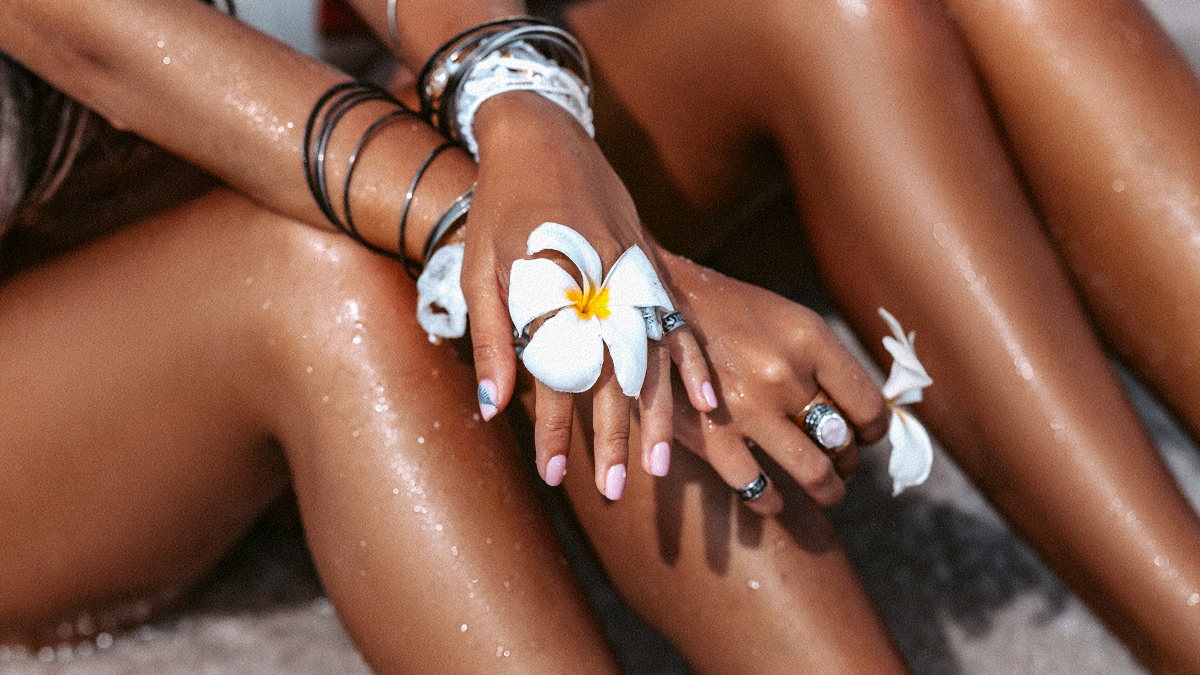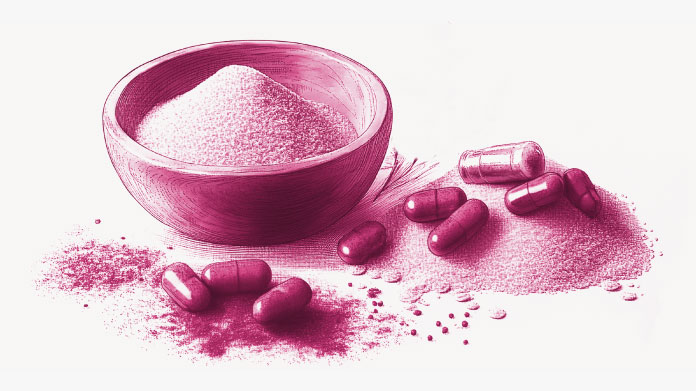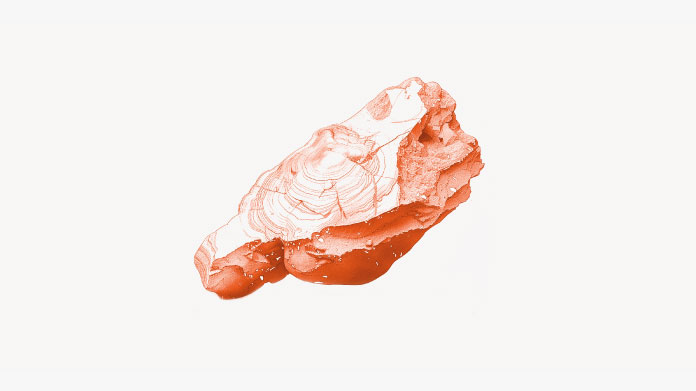8 tips for a fast, natural suntan
Summer’s here and we’re all (casually) hoping to rock that sun-kissed look … Here are some sure-fire tips on how to tan quickly, naturally and safely.

The advantage of the beach: the water, wind and sea salt combo
Do you know the reasons why we tan so well at the seaside? Obviously, there’s the fact that we enjoy spending longer outdoors, on the soft, warm sand, wearing very little, and going back and forth to cool off in the sea. The wind, too, makes the heat of the sun more bearable.
On top of that, remember that the water, the sea’s salt crystals and the white sand all help to reflect the sun. A greater number of UV rays are thus directed towards our skin and we therefore tan more easily. In addition, our skin tans faster in water, again because of the reflection of the sun’s rays (indeed, a similar effect is achieved by swimming in an open-air pool).
To tan well, build up slowly and incrementally
To achieve beautiful tanned skin, remember to take it slowly! Let your skin acclimatise to the sun, take regular breaks from sunbathing and avoid getting sunburnt as this will delay your next sunbathing session and make it more problematic.
But how exactly does the tanning process work? Once activated by the sun’s rays, cells called melanocytes, responsible for skin pigmentation, start to produce melanin which darkens the skin. Their aim is to protect skin cells from the dangers of UV rays(1-2). Producing melanin takes a little time and the skin remains very sensitive during the first few hours of exposure to the sun.
Even when your skin has acclimatised, it’s important to sunbathe in short, regular, bursts. Rather than roasting yourself for hours on end, opt instead for several 30 minute sessions over the course of the day.
Diet: stock up on vitamins, minerals and beta-carotene
Nutrition plays a key role in the health and appearance of the skin (3). It’s particularly important to ensure a good intake of vitamins and minerals.
When it comes to vitamins, focus in particular on vitamin C (eat kiwi and citrus fruit), to help prevent the skin from aging (4). For an optimal intake of vitamin C, you could take a supplement like Liposomal Vitamin C. And don’t forget vitamin E, found in nuts, egg yolk and green vegetables. It’s an excellent antioxidant (try, for example, Natural E 400) (5-6).
In terms of minerals, consider supplementing with selenium, another antioxidant, which will help protect your cells from oxidative stress (see the supplement Selenium) (7). And if you want to get the benefits of all these vitamins and minerals in a single supplement, opt for the multivitamin Daily 3.
Foods containing beta-carotene are another typical recommendation. This natural pigment is a precursor of vitamin A, which is good for the skin and the immune system. Beta-carotene is found in fruits and vegetables such as carrots, tomatoes, melons, oranges, peppers and spinach... (8-9) To optimise your intake, you could also take a carotenoid complex (such as Carottol™).
Start the course of supplements around two weeks before exposing your skin to the sun, and continue thereafter.
Protect your skin with sun cream of course!
To prevent sunburn and minimise the risk of skin cancer (10-11), it’s important to apply sun cream, spray or oil. The fairer or more sensitive your skin, the higher the SPF (sun protection factor) you need to choose. Remember that the sun accelerates aging of the skin and can lead to irreversible health problems. Be especially careful when the sun’s rays are at their most powerful (between 10am and 4pm).
Ideally, start with a high SPF sunscreen... before changing to a lower protection product a few days later. This will allow you to tan more easily while remaining adequately protected. Ensure too that you soothe any sunburn with a suitable cream such as natural yogurt or aloe vera gel.
Exfoliate your skin to prolong your tan
Sun-worshippers will also benefit from facial and body scrubs, ideally once or twice a week in the weeks leading up to a holiday or weekend break.
Why? Because this kind of exfoliation gets rid of dead skin cells and various other impurities and so prepares the skin for tanning. Better still, your beautiful suntan will last longer, because it won’t get washed away in the shower along with your dead skin ...
Moisturise your body, especially your face
The secret to a good tan also lies in regular hydration(12). Don’t forget to drink plenty of water, especially in full sun, to avoid becoming dehydrated.
And apply a suitable moisturising cream, milk or lotion. This will help maintain your skin’s vitality and radiance. Be especially generous when it comes to your face. Skin tissue here is thinner than on the rest of the body and the face therefore tans less easily.
Melanin supplements, tan-through swimwear, UV patches ...
And there are plenty more tips for successful tanning. Did you know that natural supplements are available, specially-formulated to facilitate the tanning process? The dietary supplement Tan-Aid, for example, contains keratin hydrolysate obtained from black sheep wool. This compound, rich in melanin, helps you achieve beautiful bronzed skin fast (13).
Are you aware that you can also buy swimwear that allows UV rays to pass through? Get yourself a ‘tan-through’ swimming costume to prevent ‘tan lines’ and achieve an all-over bronzed body. And once you’ve got a colour, be sure to wear white (swimwear, t-shirts...) – it’s the perfect foil for your beautiful, tanned skin ...
A UV patch is a skin sensor designed to warn you that you’ve reached your maximum ‘sun exposure threshold’. You’ll know then that it’s time to head for the shade.
And for a more even tan, stay active!
Relaxing in the sun can obviously be very pleasant. But there’s no reason why you have to assiduously stay lying down, focusing on your tan!
It’s just as enjoyable to get a tan whilst being active: swimming, beach volley-ball, cycling, badminton in the park... There’s a whole host of activities you can enjoy while at the same time achieving a beautiful, all-over tan, without even realising it.
References
- Thingnes J, Oyehaug L, Hovig E, Omholt SW. The mathematics of tanning. BMC Syst Biol. 2009;3:60. Published 2009 Jun 9. doi:10.1186/1752-0509-3-60
- Brenner M, Hearing VJ. The protective role of melanin against UV damage in human skin. Photochem Photobiol. 2008;84(3):539-549. doi:10.1111/j.1751-1097.2007.00226.x
- Schagen SK, Zampeli VA, Makrantonaki E, Zouboulis CC. Discovering the link between nutrition and skin aging. Dermatoendocrinol. 2012;4(3):298-307. doi:10.4161/derm.22876
- Pullar JM, Carr AC, Vissers MCM. The Roles of Vitamin C in Skin Health. Nutrients. 2017;9(8):866. Published 2017 Aug 12. doi:10.3390/nu9080866
- Nachbar F, Korting HC. The role of vitamin E in normal and damaged skin. J Mol Med (Berl). 1995;73(1):7-17. doi:10.1007/BF00203614
- Meydani SN, Lewis ED, Wu D. Perspective: Should Vitamin E Recommendations for Older Adults Be Increased?. Adv Nutr. 2018;9(5):533-543. doi:10.1093/advances/nmy035
- Sengupta A, Lichti UF, Carlson BA, et al. Selenoproteins are essential for proper keratinocyte function and skin development. PLoS One. 2010;5(8):e12249. Published 2010 Aug 18. doi:10.1371/journal.pone.0012249
- Garone M, Howard J, Fabrikant J. A review of common tanning methods. J Clin Aesthet Dermatol. 2015;8(2):43-47.
- Darvin ME, Sterry W, Lademann J, Vergou T. The Role of Carotenoids in Human Skin. Molecules. 2011;16(12):10491-10506. Published 2011 Dec 16. doi:10.3390/molecules161210491
- Sivamani RK, Crane LA, Dellavalle RP. The benefits and risks of ultraviolet tanning and its alternatives: the role of prudent sun exposure. Dermatol Clin. 2009;27(2):149-vi. doi:10.1016/j.det.2008.11.008
- Haluza D, Simic S, Moshammer H. Sun Exposure Prevalence and Associated Skin Health Habits: Results from the Austrian Population-Based UVSkinRisk Survey. Int J Environ Res Public Health. 2016;13(1):141. Published 2016 Jan 19. doi:10.3390/ijerph13010141
- Palma L, Marques LT, Bujan J, Rodrigues LM. Dietary water affects human skin hydration and biomechanics. Clin Cosmet Investig Dermatol. 2015;8:413-421. Published 2015 Aug 3. doi:10.2147/CCID.S86822
- Brenner M, Hearing VJ. The protective role of melanin against UV damage in human skin. Photochem Photobiol. 2008;84(3):539-549. doi:10.1111/j.1751-1097.2007.00226.x
12 Days
A Product worth waiting for when not…
A Product worth waiting for when not available and then arriving as a surprise!
DOMINIC
14 Days
On time shipping
On time shipping
GEORGE Verne
15 Days
Ordering was easy and the product was…
Ordering was easy and the product was delivered with no problems. Appreciated that I was notified when it would arrive. Thanks!
MascarC
21 Days
Great customer service - responsive …
I ordered from them and my item was unavailable for sometime. I was super happy when they reactivated my order and shipped my item which arrived very quickly. Great customer service.
Ruth Rueter
22 Days
Super fast shipping
Super fast shipping
Donald Borling
25 Days
Reputable companysearch and the number of…
The research and the number of selection of products.
NAKHJAVAN Shervin
38 Days
The Anti Aromatase is a great product
The Anti Aromatase is a great product. You just need to have constant inventory. Recently this product has been out of stock.
GEORGE Verne
40 Days
Great help on chat
Great help on chat. Knowledgeable and friendly.
Jason Argos
43 Days
Customer service was fast and friendly.
Customer service helped to stop the transaction process of the subscription. I appreciated that.
Greenie
43 Days
I order here due to the high quality of…
I order here due to the high quality of the products and the quick delivery of items - thank you
Barbara J
45 Days
SuperSmart's Eye Pressure supplements: highly recommended!
I purchase SuperSmart's Eye Pressure supplements regularly for over 5 years, and gotta say they are truly a wonderful product for my Glaucoma. Highly recommended if you have eye pain from your Glaucoma.
D. Martinez
49 Days
Quick service
Quick service
MONELL
50 Days
Speedy service.
Speedy service.
ROSENTHAL Marvin
54 Days
Clear website- Efficient
Clear website. Excellent search engine and fast delivery!
Mohamad Hussein
56 Days
They have great products.
They have great products.
Vickie



